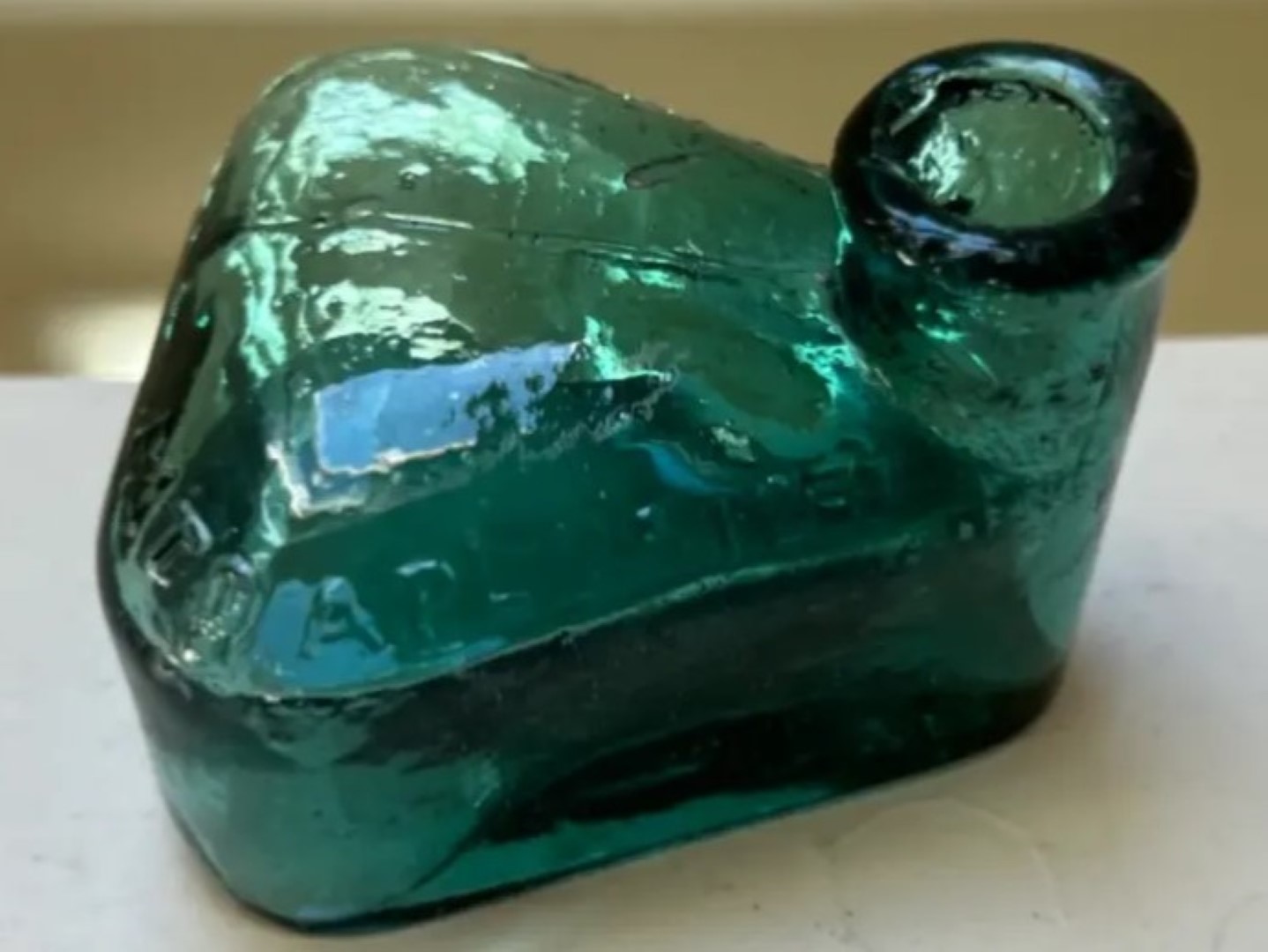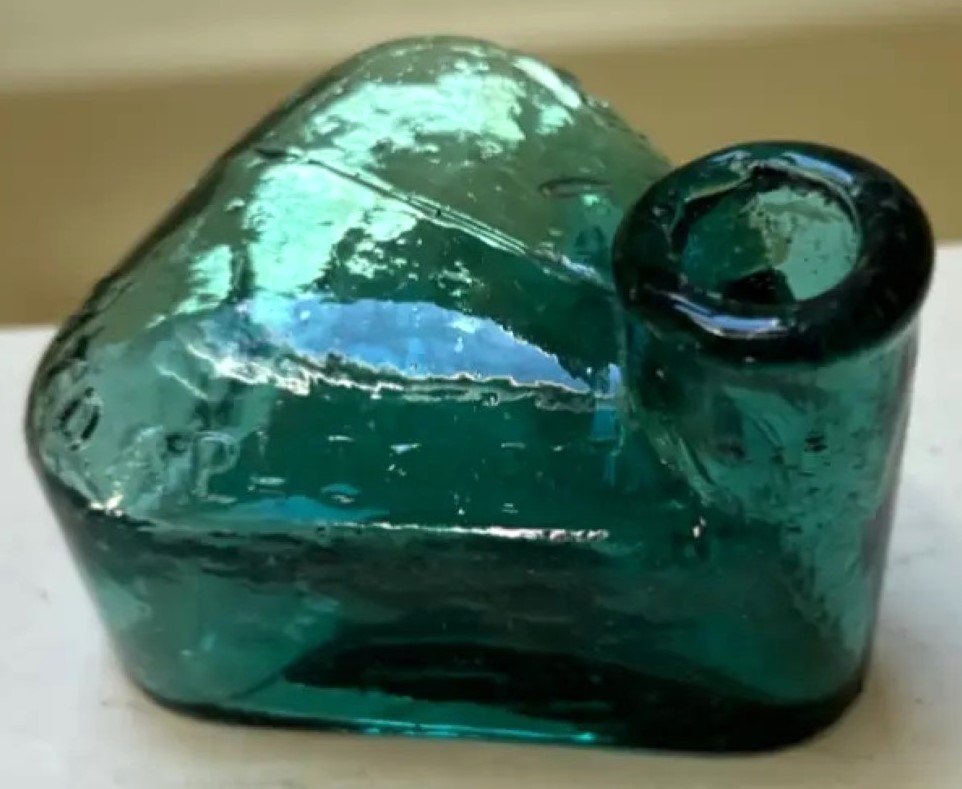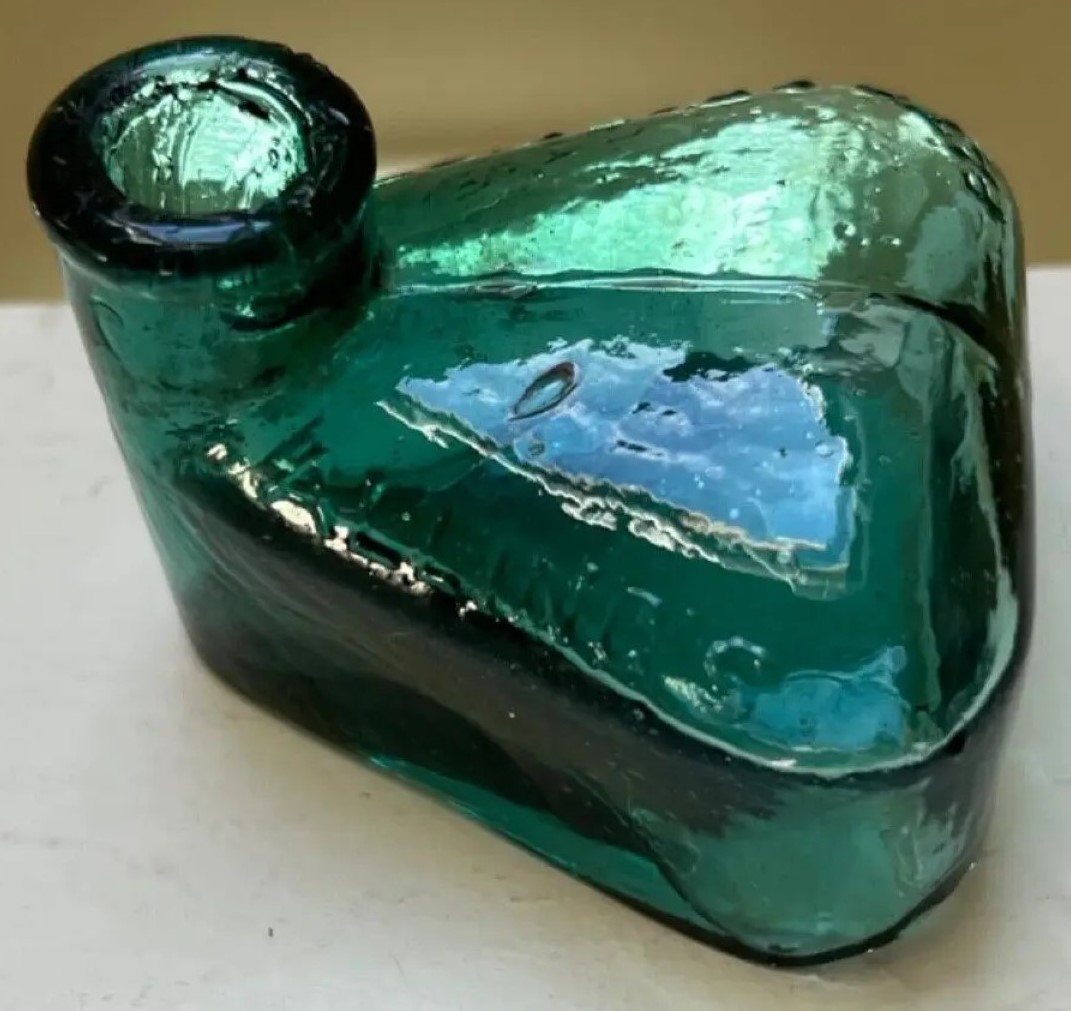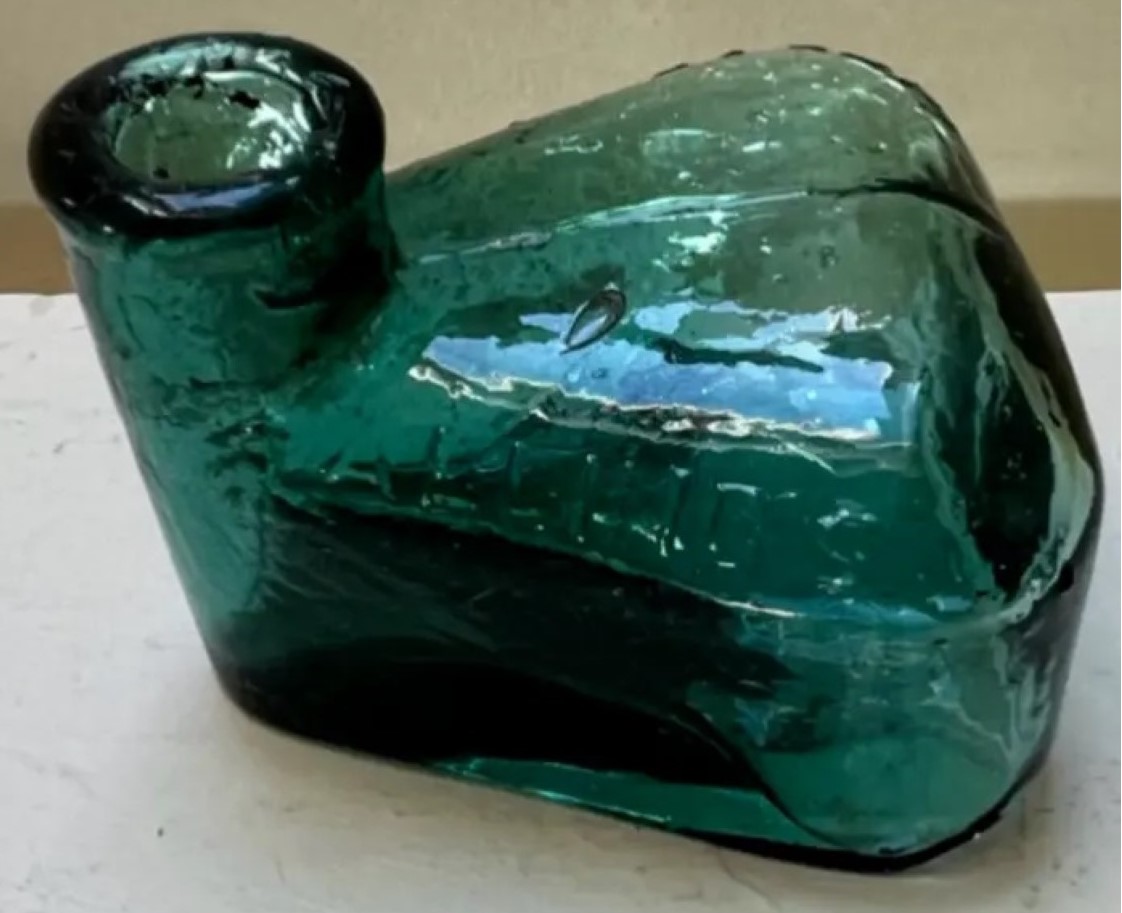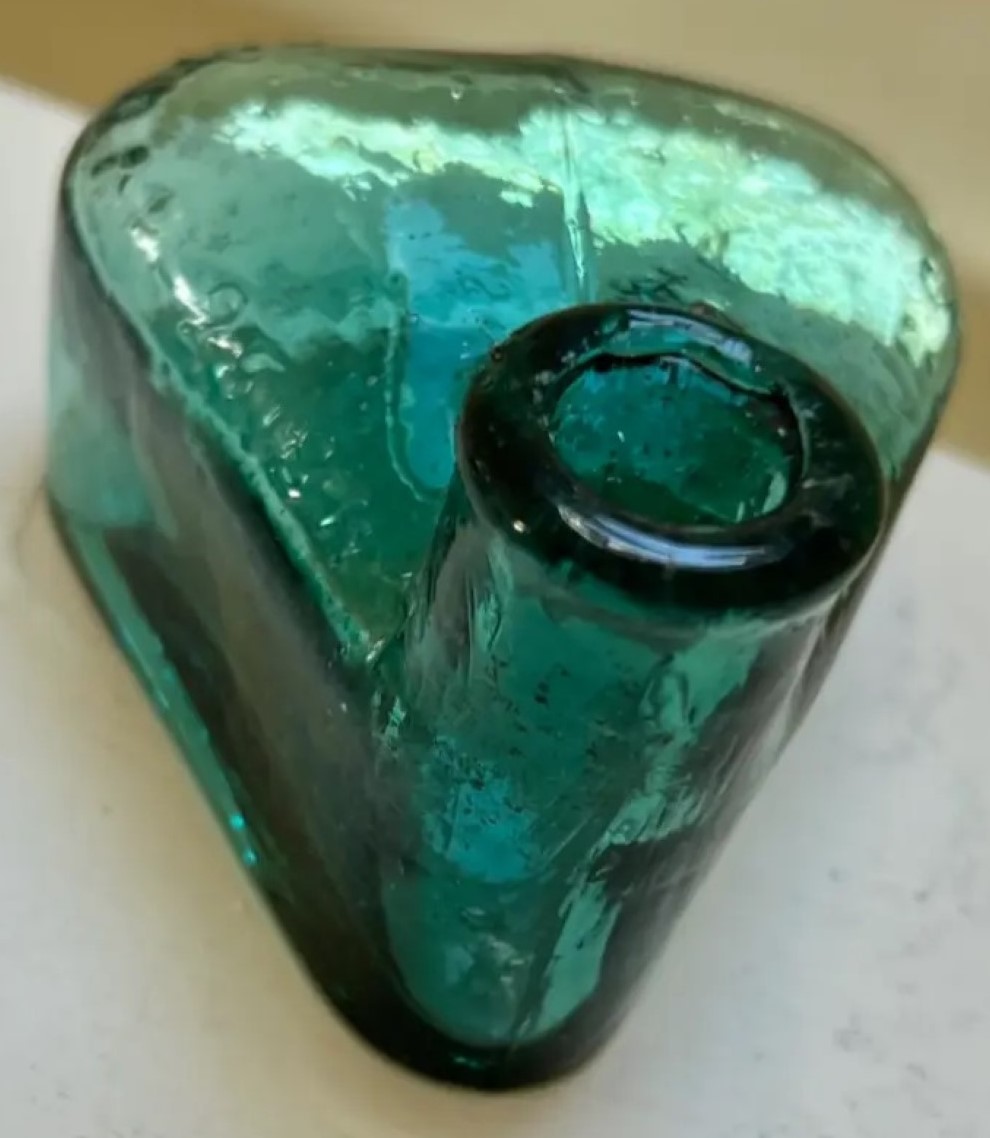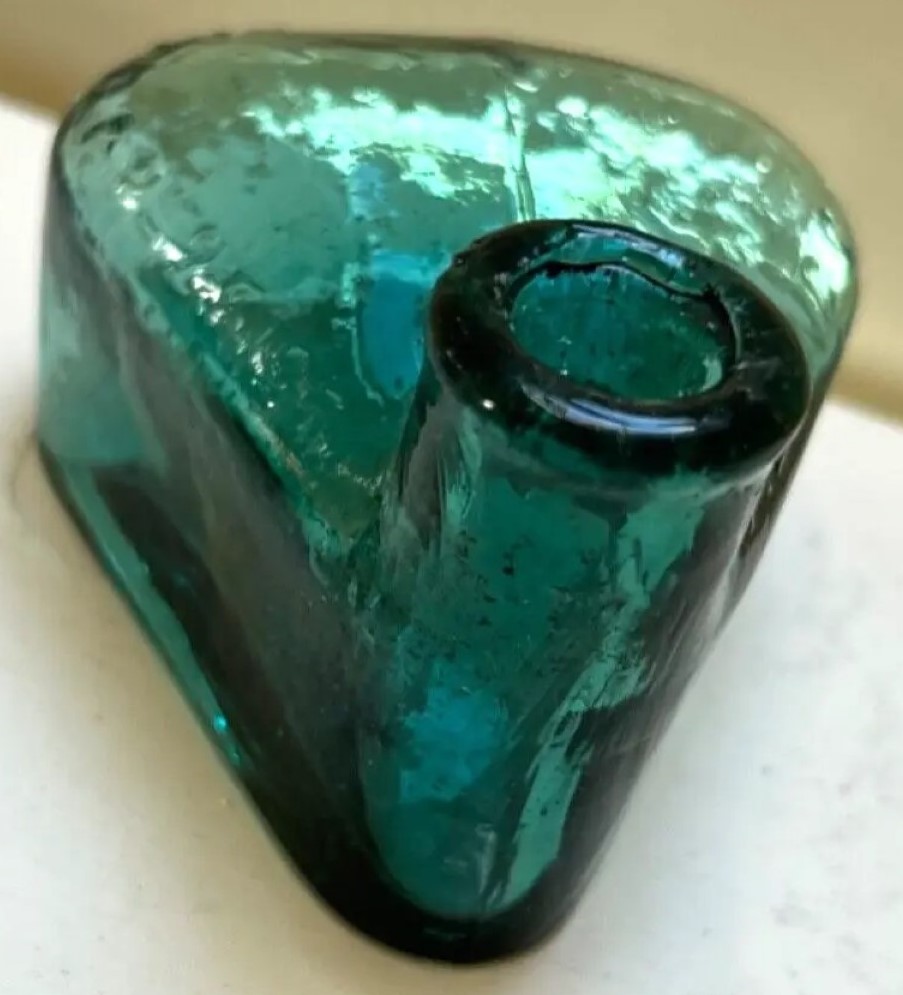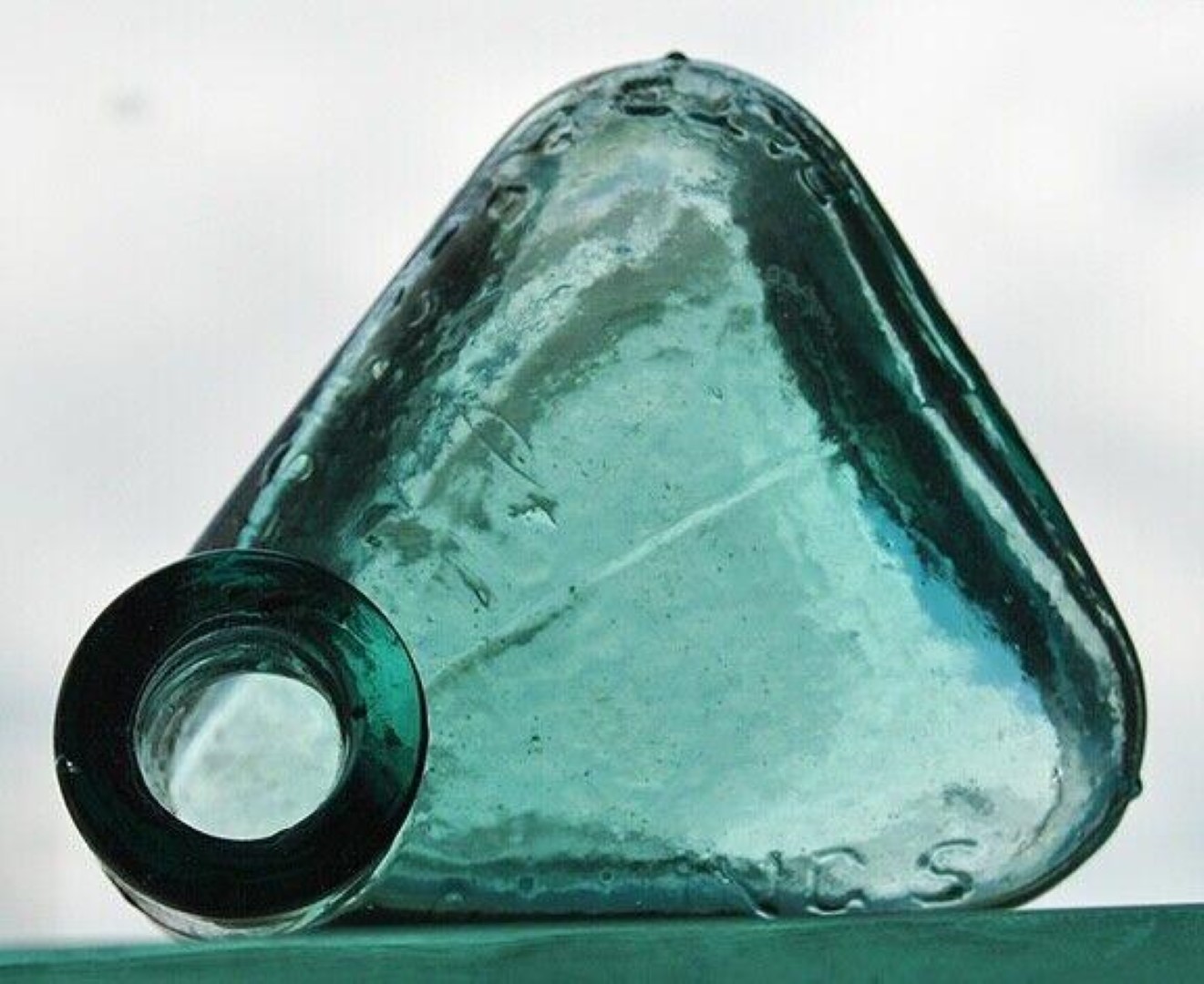
Alling’s Ink Bottle
| Categories | Ink Bottle |
| Material | Glass |
| Markings | See Narrative |
| Manufacturer | Alling |
| Origin | United States |
| Date or Era | circa 1871 |
| Measuring | 2 ⅜” x 2 ½” x 1 ⅞” high |
A thick, triangular-shaped, mold-blown, bimal, blue green ink bottle with tooled lip. Embossed around the top domed sides: “ALLING’S – PATD. APR. 25 1871”.
A second example with its original label is pictured. The label says, “Jet Black High School Ink, Manufactured Solely by Fred D. Alling, Rochester, N.Y. – Trade Mark Alling’s High School Ink”.
Frederick Dwight Alling was born on July 9th, 1843 in Rochester, New York. Alling entered the Rochester Collegiate Institute as a freshman on September 12, 1861and received a Bachelor of Arts degree from the college in 1868.
New to the business world, young Frederick was employed in Rochester for two and a half years as a clerk and traveling salesman in the paper and stationery trade conducted by his father William Alling at Alling & Cory.
In July 1867, Frederick D. Alling started his own business providing fine stationery, engraving, and fancy goods. In 1869, he closed out the fancy goods, stationery, and engraving departments, and devoted himself exclusively to the manufacture of all kinds of inks and mucilage. He would remain in this business his whole career.
Inks would become his specialty to the point where he produced many varieties for business and schools. Once when pressed on the types of inks he made, Alling said:
“I manufacture seventeen different varieties of Alling’s Ink. I manufacture no other ink. There are different varieties of Alling’s inks. We manufacture nutgall ink writing fluid. My No. 1 commercial ink is the principal ink; the next is No. 2; the next is No. 3. Not as high up No. 17. They are not numerically designated. We make a school ink and black ink. No. 5 is a brilliant carmine. The next black ink is a nigrosine ink. The next one a black marking ink. The next one a Banker’s Safety Ink, violets, blue and green. There are perhaps six or seven black ones. So, there are only six or seven black inks that I make.”
“The different grades are intended for different purposes. The banker’s ink is not fit for school. No. 1, No. 2, and No. 3 are used commercially. The banker’s ink is specially prepared for the prevention of alterations of drafts and checks. The commercial inks are more liable to be erased than the banker’s ink. Possibly the logwood inks might be easier to erase than the commercial ink. “
“These mercantile inks are made from nut gall and the school inks from logwood. I manufacture but one writing fluid, which is a commercial ink; its designation is No. 1 mercantile ink. I have a No. 2 mercantile ink, which is a combined writing and copying fluid. Primarily they are writing fluids, which I designate as ink. I sell it as ink. It is designated as a writing fluid on the label. I sell writing fluid and call it ink.”
In many instances, Alling was called to provide expert witness testimony on the ink signatures on wills and testaments. He fully established his business, and at one point was selling his inks in twenty-eight states. He would die in 1910 though his company would live on providing inks into the 20th century as evidenced by a 1917 advertisement pictured.
Example 1 sold for $270 in February 2024
Example 2 (with label) sold for $243 in August 2022
Content disclaimer. The information posted is the owner’s best knowledge and may not have been vetted by the SOIC. We welcome comments, corrections, and additions, working to make our website information comprehensive and accurate.
Join the Society of Inkwell Collectors (SOIC) – it’s free!
Founded in 1981 as a non-profit organization,
we are documenting inkwells (and accessories).
We’re here to help and inform!
